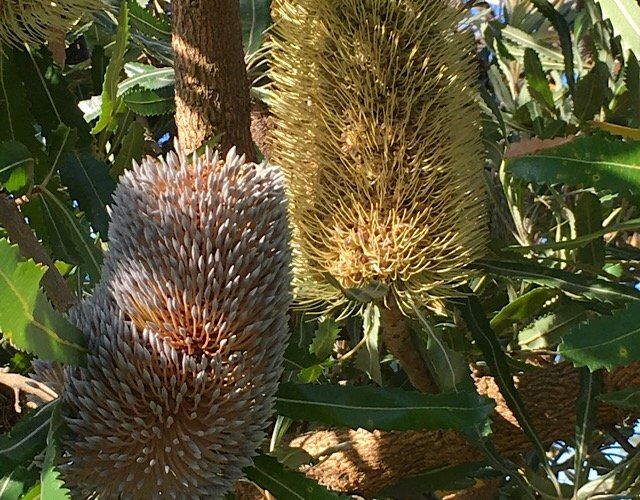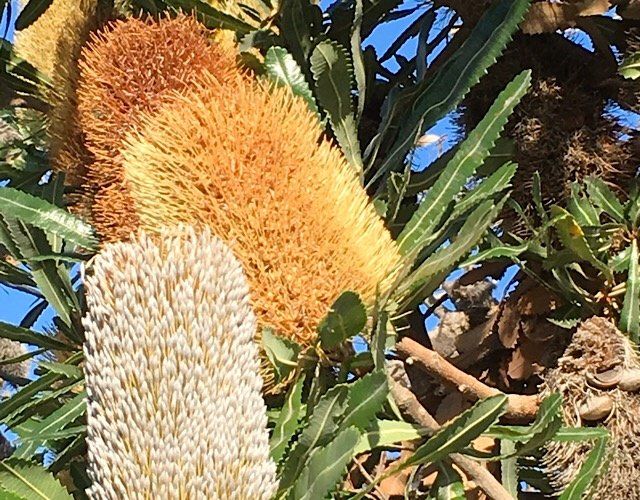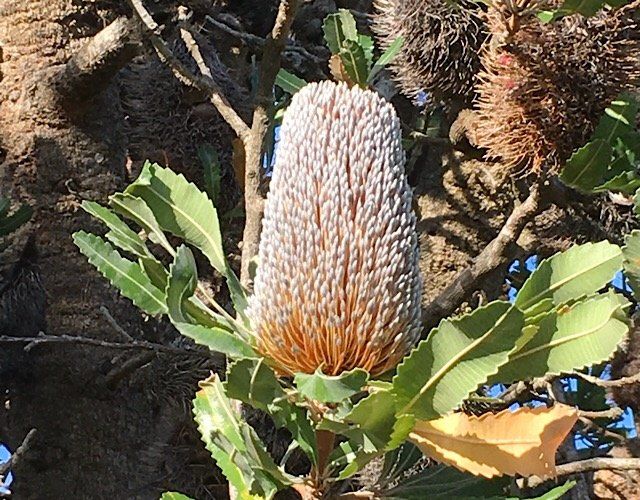Hi Folks.
Just thought Id spend a bit of time talking about swarming and how it impacts on the hive (and also the beekeeper.) Swarming generally occurs during spring time but may occur at other times if conditions are right. The chances of swarming are now considerably lower than what they were in the last two months but it is still important to keep an eye on the larger hives. A hive normally enters spring with a small cluster of bees surrounding the brood nest and the queen. As days begin to warm up, wattles and native plants start to flower. This is the trigger for the queen to start increasing her laying. She will begin laying about a thousand eggs per day which results in an explosion of bee numbers over a period of about a month. When this situation arises, the beekeepers job is to ensure that the bees have sufficient space and the queen has the room to keep laying. Over crowding and a lack of space tend to be the triggers for swarming. Early in the spring, the boxes on a hive can be swapped around. Bees tend to want to work in the highest box. Quite often at this time of year, the bottom box is empty. As soon as this task is performed, bees will tend to move up into the empty box and prepare cells for the queen to fill with eggs. Swapping boxes does not prevent swarming, it just gives you more time. As spring progresses, the hive begins to be over run with young bees. Remember there would be approximately 1000 bees hatching every day. At this point in time it surpasses the number of bees that die and therefore the colony continues to build. With the vast number of bees out bringing in nectar, the hive can quickly become honey bound and the spaces left for the queen to lay becomes less. Both situations can trigger the swarm impulse. A beekeeper should extract honey when possible and add an extra box with frames to make some more space. Requeening a hive, tearing down queen cells as they are produced and making hive splits are other methods that are used to help control the problem. What happens if a hive swarms and how does it impact on the colony and the beekeeper? When a hive wants to swarm, special queen cells are built by the bees. An egg is layed in the cell and then the young larvae is raised on a special diet. When a number of queen cells are produced and sealed, the hive is ready to swarm. These cells are visible indicator in the hive and Swarming will normally occur on a sunny day within a few days of the cells being capped. Prior to swarming, the queen is given a restricted diet so that she can loose weight for the swarming flight. She basically stops laying at that point and there will be little open brood in the hive. Just before the bees swarm, bees gorge themselves on honey to take with them. Most of the swarm will be young flying bees. About half the hive takes off as a swarm anywhere from mid morning to just after lunch. The rest of the swarming process has already been spoken about but we should now look at the consequences of swarming. The hive at this stage has half of its worker population gone. It has no queen, some sealed queen cells, very little open brood and a lot of capped brood. Many of the flying bees are older and there is a good number of nurse bees. The biggest issue for the colony is the lack of eggs and young larvae. There is a break in the laying cycle which will have consequences down the track. The new queen may not hatch for five or six days. She then takes a few days to get organised and establishes herself in the hive (also kills any other queens that may not have hatched) She then heads off on a mating flight. After another short break she will then settle down and start laying eggs. The first eggs need three weeks to develop into bees. You can now see that a period of five or six weeks has been lost to the hive. During that time, older bees have died and the hive numbers dwindle. To put it simply, having a hive swarm on you can mean a huge loss in honey production over the season.
Cheers
Les



